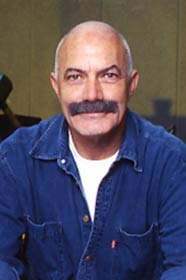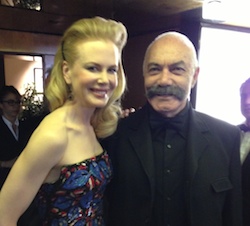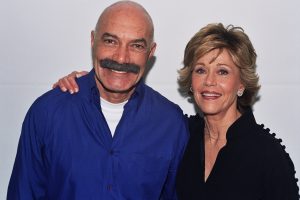Hitchcock directed Sabotage (released in the U.S. as The Woman Alone), British espionage thriller, starring Sylvia Sidney, Oskar Homolka, and John Loder.
It is loosely based on Joseph Conrad’s 1907 novel “The Secret Agent,” about a woman who discovers that her husband, the owner of a London movie theatre, is a terrorist agent.
Sabotage should not be confused with Hitchcock’s film Secret Agent, which was also released in 1936, but is loosely based on two stories in the 1927 collection “Ashenden: Or the British Agent” by W. Somerset Maugham.
Set in London
In London, when sand is put into the bearings of an electrical generator, it causes a power blackout. At a cinema owned by Karl Verloc (Oscar Homolka), people demand their money back.
Narrative Structure
Verloc enters through a back entrance to the living quarters above. He washes sand from his hands, but when his wife (Sylvia Sidney) comes, he pretends to have been asleep. He instructs her to refund the money, saying he has “some money coming in” anyway. As the money is about to be disbursed to the customers, the lights go back on.
Verloc, it turns out, is a member of a gang of terrorists from unnamed European country planning a series of attacks in London, though no exact motive is clear.
Verloc’s contact is disappointed that the newspapers mocked the short loss of electricity, and instructs Verloc to place a parcel of “fireworks” at the Piccadilly Circus tube station on Saturday, during the Lord Mayor’s Show. When Verloc is not comfortable with the task, his contact says to get someone else to do it. Verloc is given the address of a bird shop, whose owner also makes bombs.
Scotland Yard suspects Verloc’s involvement in the plot and has placed Detective Sergeant Ted Spencer (John Loder) undercover as a greengrocer’s helper next to the cinema. He befriends Mrs. Verloc and her little brother, Stevie (Desmond Tester), who lives with them, by treating them to a meal at Simpson’s.
Spencer and Scotland Yard are unsure whether Mrs. Verloc is complicit in the terrorist plots, but by the end of the meal, he is convinced she is innocent and is falling for her.
At the bird shop, the bomb-maker says he will prepare a time bomb and set it to explode at 1:45 p.m. on Saturday. Later that night, the terrorist group meet in Verloc’s living room above the cinema. Detective Spencer attempts to eavesdrop on the conversation, but he is seen. The meeting ends abruptly and the members scatter, worried that they are followed. Verloc tells his wife that the police are investigating him, but maintains his innocence.
Verloc receives a package with two caged canaries–a present for Stevie–and the bomb. Verloc asks Stevie to deliver a film canister to another cinema, and since it is on his way, to deposit another package in the cloakroom at Piccadilly Circus station. It contains projector parts to be repaired.
Unknowingly carrying the time bomb, Stevie is delayed by several events, including the Lord Mayor’s Show procession. Stevie manages to talk himself aboard a bus to Piccadilly Circus, even though flammable nitrate film is not allowed on public vehicles. The bomb explodes on the bus, killing Stevie and others.
Verloc confesses to his wife, but blames Scotland Yard and Spencer as they were the ones who prevented Verloc from delivering the bomb himself. Ass they are preparing to eat dinner, she becomes infuriated and stabs him to death with a knife.
When Spencer arrives to arrest Verloc, he insists that she should not admit stabbing her husband. Even if it was self-defense, she might not be believed in court. Spencer plans to abandon his career and leave the country with her.
The bomb-maker goes to Verloc’s flat to retrieve the birdcage in case it might incriminate him, but the police, who already suspect him, follow him. Mrs. Verloc tries to confess, but moments after she says her husband is dead, the bomb-maker sets off a bomb, killing himself and destroying Verloc’s body.
Closure: Emergence of a New Couple
The police superintendent is unsure whether she spoke before or after the explosion, as Ted and Mrs. Verloc flee the city.
Robert Donat: First Choice
Hitchcock wanted to cast Robert Donat, with whom he had previously worked in The 39 Steps (1935), as Spencer, but he was forced to cast another actor (John Loder) owing to Donat’s chronic asthma.
Alexander Korda, to whom Donat was under contract, refused to release him. Hitchcock, who was not happy with Loder’s casting, commented, “The actor we got wasn’t suitable, and I was forced to rewrite the dialogue during the shooting.” Sylvia Sidney was upset when Loder was cast as she agreed to make the film with Donat.
In three years, Donat would win the Best Actor Oscar for what would become his most iconic role in the 1939 Goodbye Mr. Chips.
Hitchcock also chose the young Bobby Rietti–later known as Robert Rietti–to play the part of Steve, but he was unable to sign him for legal reasons.
Screen Vs. Novel
Bennett adapted loosely Joseph Conrad’s novel, transforming the political Tsarist-era agents provocateurs into foreign agents without any obvious political leanings.
Verloc’s shop is changed into cinema, with the films being shown echoing the story, and the policeman investigating the case is an undercover officer posing as greengrocer.
Since the film was produced in the years preceding World War II, the unnamed hostile power behind the bombings has been assumed to be Nazi Germany. However, the film does not specify this, and Verloc’s first name has been changed, presumably because his name in the novel, Adolf, had other connotations when the film was made.
Stevie, Mrs. Verloc’s brother, is ordinary schoolboy, with few of the visionary attributes of his literary counterpart.
Stevie’s death is a climactic moment, providing insight into Hitchcock’s views about how the innocent suffer through random violence.
When a critic condemned Stevie’s death as brutal and unnecessary, Hitchcock said that he regretted including it in the film, not because of the brutality, however, but because it violated suspense, whereby tension eventually had to be relieved.
Hitchcock remained faithful to the novel in having the bomb go off and it also allowed him to justify that the boy’s sister would eventually kill her husband, who was responsible for the boy’s death, and got away with it.
Intertextuality
Many scenes were set in a cinema, allowing Hitchcock to include references to contemporary films, such as an excerpt from Disney Silly Symphony Who Killed Cock Robin? (1935).
Tarantino used the scene where Stevie is initially not allowed onto the bus due to the nitrate film, in his Inglourious Basterds. This was used to explain the use of nitrate film for the character’s terrorist plot.
Critical Response in 1936
Frank S. Nugent of The New York Times praised the film as “a masterly exercise in suspense.” Variety wrote, “Competent and experienced hand of the director is apparent throughout this production, which is a smart one and executed in a business-like manner from start to finish.” However, the review noted that the motivation of the terrorists “is not made clear. As a result, the audience watches the piece and its suspensive moments with interest, and when it is over, is still hazy as to the why and wherefore.”
Harrison’s Reports called it “A thrilling melodrama,” adding that Hitchcock “again shows his skill in building up a situation to a tense climax.” The Monthly Film Bulletin wrote, “The individual genius of Hitchcock is very clearly shown in the distinctive and original direction,” and called Oscar Homolka’s performance “remarkable.” John Mosher of The New Yorker called it “rather exciting for the most part. It’s a lively, minor Alfred Hitchcock picture.” Writing for The Spectator, Graham Greene gave the film a good review, pronouncing that “in Sabotage for the first time [Hitchcock] has really ‘come off'”. Greene identified the children’s matinée scene as an “ingenious and pathetic twist stamped as Mr Hitchcock’s own”, and he praised the melodrama present in the screenplay writing, the dialogue, and the acting cast generally. Greene’s only complaint was in relation to the acting of the “unconvincing” detective (Loder) and the “invincibl[y] distaste[ful]” prep school student (Tester).
Critical Status Now
In 2017, a poll of 150 actors, directors, writers, producers and critics for Time Out magazine ranked the film 44th best British film ever. In 2021, The Daily Telegraph ranked the film at No. 3 on its list of “The 100 best British films of all time.”
Cast
Sylvia Sidney as Mrs. Verloc
Oskar Homolka as Karl Anton Verloc
Desmond Tester as Stevie
John Loder as Sergeant Ted Spencer
Joyce Barbour as Renee
Matthew Boulton as Superintendent Talbot
S. J. Warmington as Hollingshead
William Dewhurst as The Professor
Charles Hawtrey as a Studious Youth at the aquarium (uncredited)
Peter Bull as Michaelisa, a Conspirator (uncredited)
Torin Thatcher as Yunct (uncredited)










